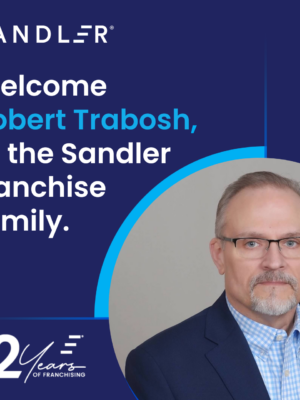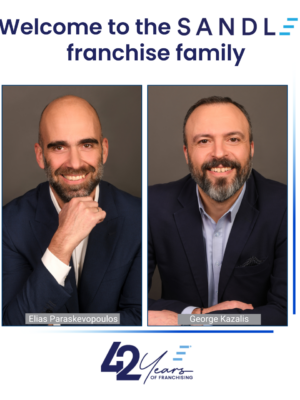Qualifying Hard, Closing Easy: The Sandler Pain Step (and Why Your Team Isn’t Completing It)

At Sandler, we teach and relentlessly reinforce a simple principle, an impossible-to-forget idea that carries massive implications for optimal revenue production: qualify, hard, close easy.
One of the big problems we see, though, is that people sometimes imagine they’re qualifying hard, but aren’t. Why not? Because they aren’t completing a non-negotiable element of qualification: qualifying the potential buyer’s Pain, with a capital P. If we haven’t done that, we have no place making any formal recommendation or presentation to the buyer. And, as a result, we can’t expect to close easily.
When we qualify effectively for Pain, what are we doing? We’re clarifying, in emotional, practical terms that resonate for the buyer, exactly what all the potential costs are for not taking action on a problem that’s keeping them from getting where they need to go next in their world.
One of our most famous tools for clarifying the emotional impact of those costs is known as the Sandler Pain Funnel. It’s a powerful series of questions that looks like this:
Tell me more about that…
Can you be more specific? Give me an example.
How long has that been a problem?
What have you tried to do about that?
And did that work?
How much do you think that has cost you?
How do you feel about that?
Have you given up trying to deal with the problem?
Make no mistake: The Sandler Pain Funnel is a game-changing tool.
There’s a reason this iconic sequence of questions has remained famous, and widely used, by top-performing sellers for as long as it has. Sales professionals trained in the Sandler methodology have been using this powerful interviewing model for more than a half-century now – because it works! It does the job. It uncovers Pain, with a capital P. But here’s the problem: it does not, in and of itself, finalize the Pain step.
Unfortunately, even sales teams who have been trained and reinforced in the Sandler method sometimes forget that.
They don’t continue the conversation, in the spirit of the Pain Funnel, by walking, hand-in-hand with the buyer, down the unique, impossible-to-predict-ahead-of-time alleyways of a particular business challenge. In short: they don’t connect the dots. They skip the important action item of leading the conversation with the buyer toward a clear, quantifiable, monetary cost, in both the long term and the short term, for leaving the problem that’s just been identified unsolved.
The Sandler Pain step is not complete until they do that!
Qualifying without qualifying for the short-term and long-term monetary impact is not qualifying hard. It’s a recipe for failure. Once we complete the Sandler Pain Funnel, our job is not over!
That means that after we “complete” the Pain Funnel (notice the quote marks; nothing is actually complete yet!) we need to move out on our own. We need to take a look around, evaluate what’s been uncovered and what hasn’t, and be ready to continue the conversation with monetization-focused Pain questions.
These are going to vary dramatically depending on the situation, which means that, unlike the situation where we deploy the Pain Funnel questions to begin the Pain convesation, there is no one simple template we can follow in this situation. We have to use our heads; we have to collaborate in real-time with the buyer in a way that reinforces what we’ve learned and makes them feel listened to. We can’t use a checklist. This is not a checklist-driven part of the conversation. But it’s vitally important.
All that having been said, here’s a quick list of the kinds of questions we may come up with when we ask monetization-focused Pain questions. Let me emphasize, though, that this is not a checklist. Take a look.
- I’ve been taking some notes. Based on what you’ve said, here are the five things you just said are causing big problems for you. You know your world a lot better than I do. Is this everything on the list? If not, you’ve got more Pain to uncover.
- (For each item:) If we turned that into hard dollars, what do you figure that cost you over the past year? Let’s do the math. Do the math! Together!
- How about over the next (three months)? (Or whatever the relevant timeframe is.) Let’s do the math on that. Again: Do the math! Together!
- Let’s also look at (cost of ownership, return on investment, risk mitigation – whatever metric your buyer responds to and needs to quantify for himself/herself and, ideally a higher-up.) Do the math on this, too … side by side.
Now here comes the big question. Given that we teach this at Sandler … we reinforce this relentlessly at Sandler … and we practice this relentlessly at Sandler, because yes, we’re salespeople, too … why do so many of the sales teams we work with routinely skip this step? Why is this critical part of the qualification for Pain left incomplete at so many organizations, even though the teams “know what to do”?
The answer is as simple as it is fixable: Head trash.
If you or someone on your team has been trained and reinforced in the Sandler methodology, but you’re not qualifying for Pain with monetization-focused Pain questions, there’s only one item at the top of the list of likely explanations: something in your personal history has left you with one or more dysfunctional personal beliefs when it comes to talking openly about money with buyers. Please read that again: the problem is a dysfunctional personal belief, built into your “operating system,” when it comes to talking with buyers about money.
Read more articles in the Sandler Advisor, our quarterly e-newsletter designed to help you succeed in sales and leadership.








